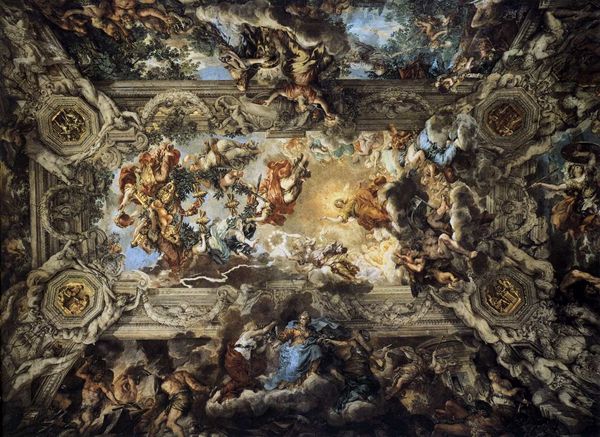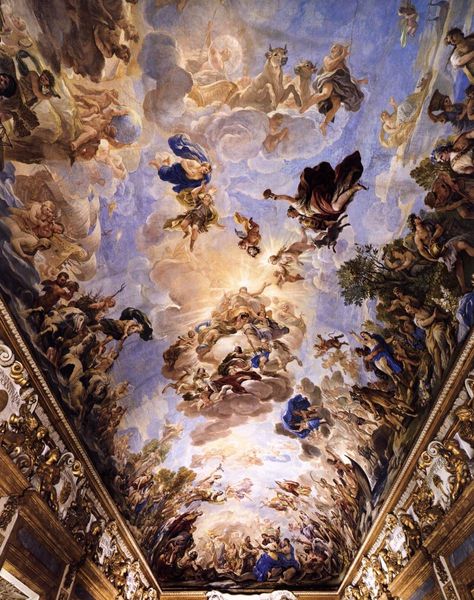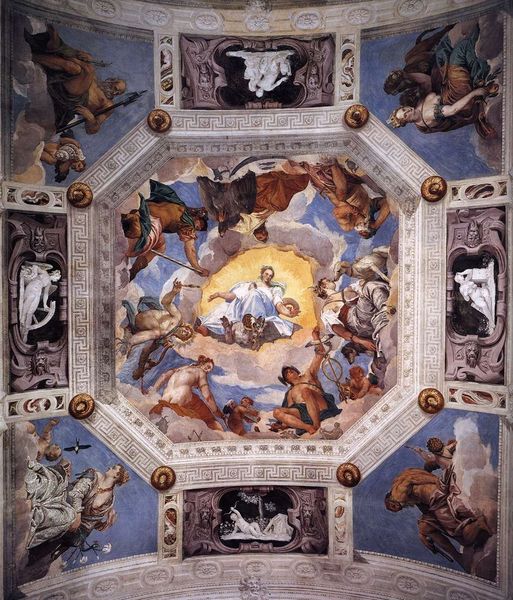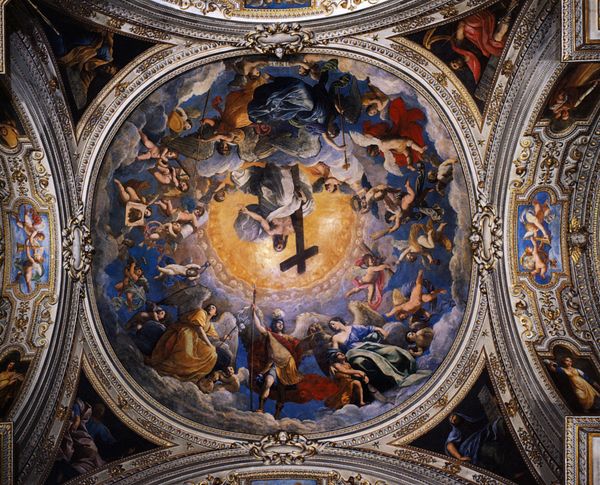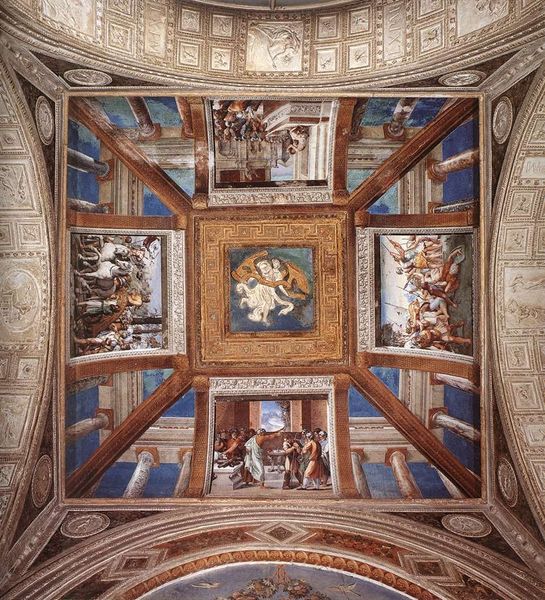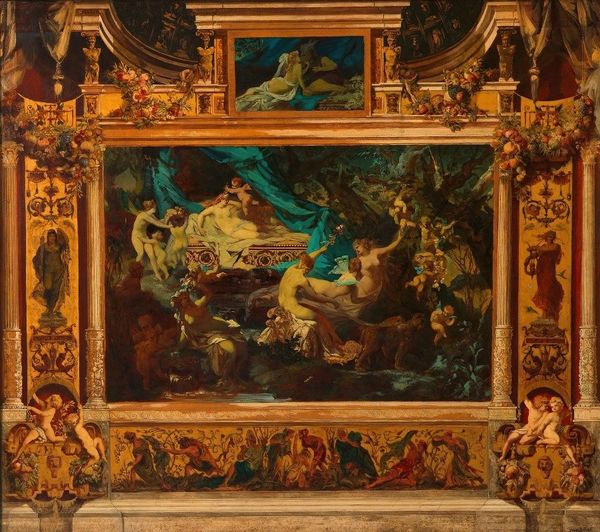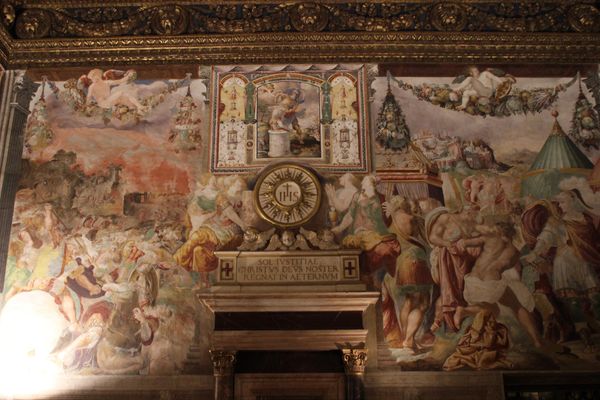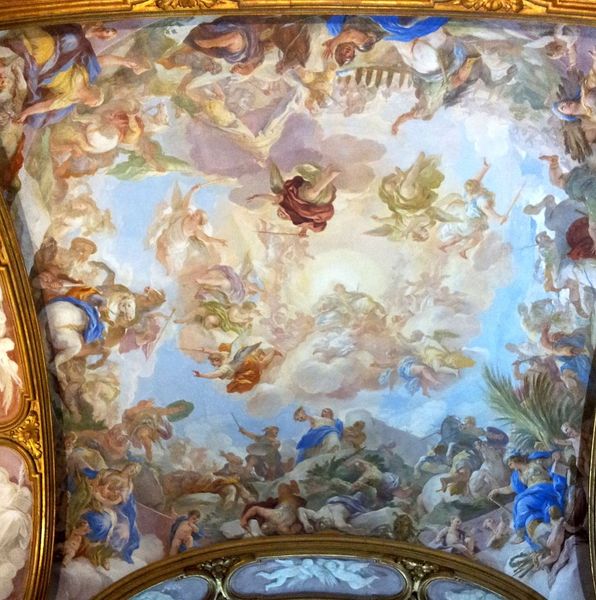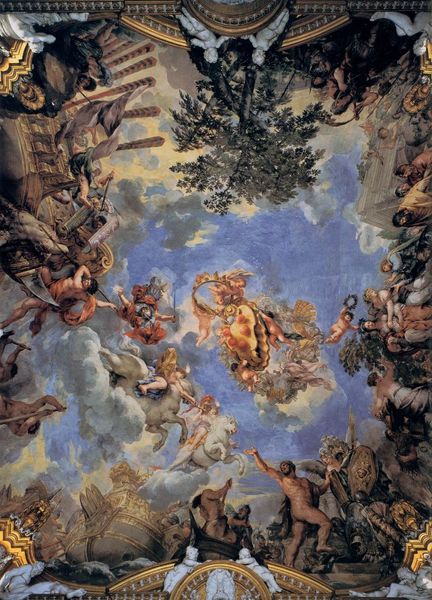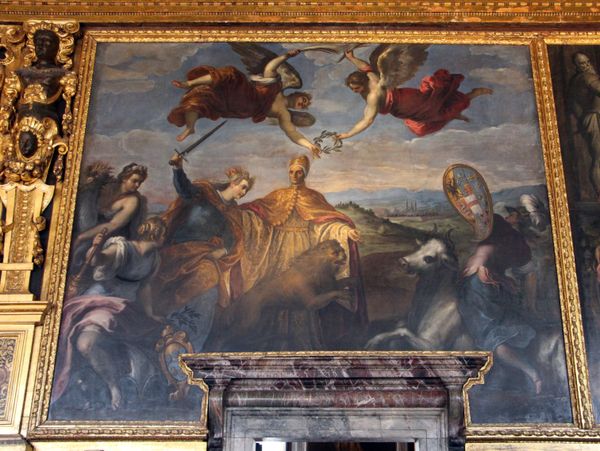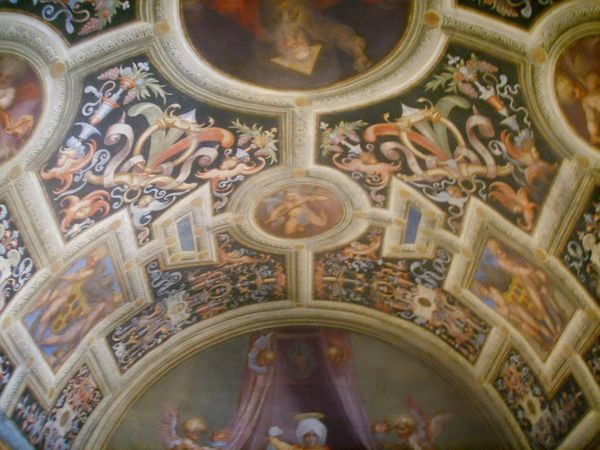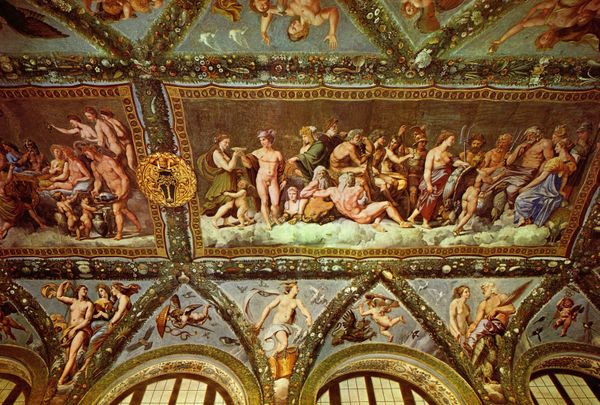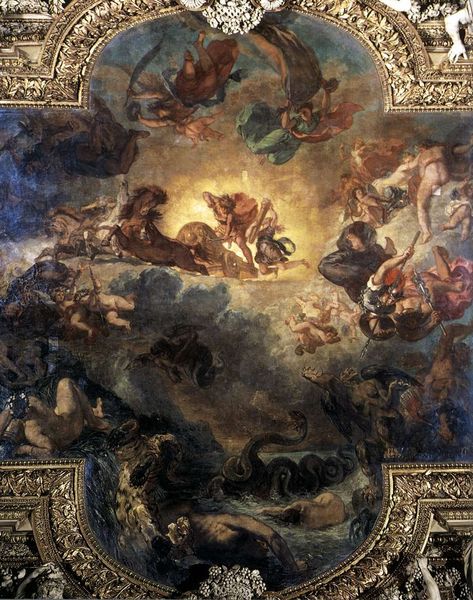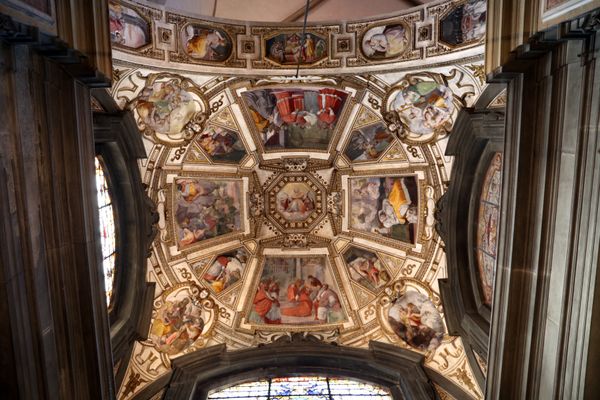
carving, painting, oil-paint, fresco, photography, mural, architecture
#
portrait
#
carving
#
allegory
#
baroque
#
painting
#
oil-paint
#
sculpture
#
historic architecture
#
fresco
#
11_renaissance
#
photography
#
architecture
#
christianity
#
history-painting
#
mural
#
architecture
Copyright: Public domain
The Ceiling Fresco in the Hall of Saturn was painted by Pietro da Cortona in the Palazzo Pitti, using the traditional fresco technique. This process involves painting directly onto freshly laid plaster, so that the pigments bind with the wall as it dries. The fresco's material qualities dictate the final appearance, with the damp plaster influencing how the colors blend and set. Cortona would have had to work quickly and decisively, a testament to his skill and experience. But we also need to remember that this wasn't just Cortona’s job. Executing a ceiling fresco involved many hands: those preparing the plaster, grinding pigments, and erecting scaffolding. These unseen laborers were crucial to the final artwork. Consider, too, the social context: the Palazzo Pitti was a seat of power, and this opulent decoration was designed to impress. So, while admiring Cortona’s artistry, we should also appreciate the broader picture of materials, labor, and social meaning that this artwork embodies.
Comments
No comments
Be the first to comment and join the conversation on the ultimate creative platform.
